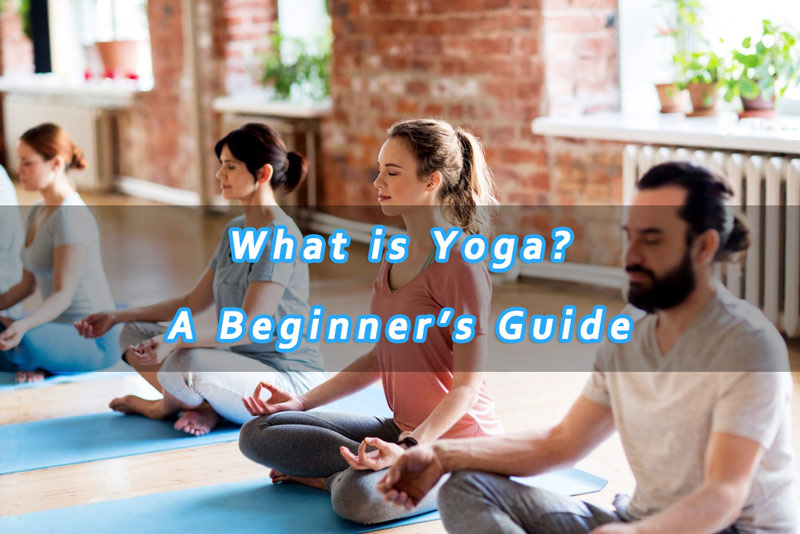
Yoga developed thousands of years ago in Indian Culture, has become a trendy way of living for people tremendously worldwide. Its practices include postural exercises (asanas) along with breath control (pranayama) and concentration/mind control (dhyana), which together help to yield better physical and psychological health. And even if it’s not your ally, you can learn and admire yoga in every single explanation of it, and everyone will benefit from at least a few of its benefits.
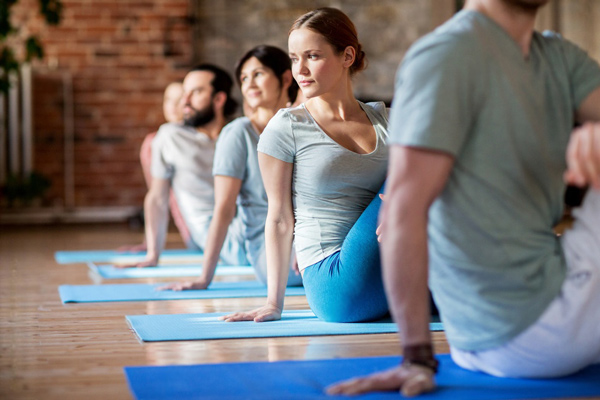
For a quick and clear overview of yoga, this table highlights the key essentials covered in this guide. Whether you’re just starting or have been practicing for a while, it offers a handy reference to the core elements of yoga, its many benefits, and the different styles you can explore.
| Section | Key Points |
| What is Yoga? | Integrates physical, mental, and spiritual well-being through asanas, pranayama, and meditation. |
| Benefits of Yoga | Improves physical health, enhances mental well-being, reduces stress, and develops self-awareness. |
| Styles of Yoga | Includes various styles like Hatha, Vinyasa, Bikram, and more, catering to different preferences and needs. |
| Physical Health | Increases flexibility, strength, and balance; reduces chronic pain and arthritis symptoms. |
| Mental Well-being | Promotes relaxation, reduces anxiety and depression, improves focus and emotional health. |
| Breath Work | Involves controlling breath to enhance relaxation, focus, and energy levels. |
| Meditation | Cultivates mindfulness and inner peace, leading to greater mental clarity. |
| Yoga for Beginners | Focuses on simple poses and breath awareness, making it accessible and practical. |
| Preventing Injuries | Emphasizes listening to your body, maintaining proper alignment, and using props when needed. |
| Incorporating Yoga into Daily Life | Encourages regular practice, even in short sessions, to experience the full benefits of yoga. |
For that, it is enough to learn these basic ideas to understand, so that when you choose to practice yoga, you will not be bewildered regarding what you will gain from yoga.
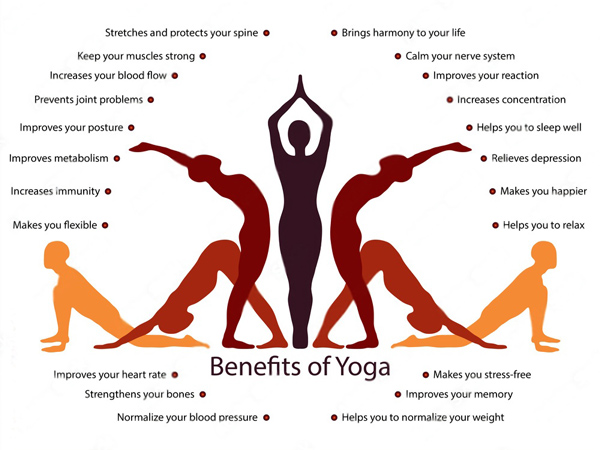
Apart from all the factors, what is more advantageous about formatting is to keep the physical aspect of reshaping and this is what is more common to look at in the case of yoga. If engaged initially in practicing asanas consistently it can also assist:
The effects of yoga on mental health are equally great. In particular, practicing yoga can:
With the pace of life that everybody has to deal with nowadays, it is without a doubt that there is a problem with stress levels. Yoga helps manage stress and enhances relaxation:
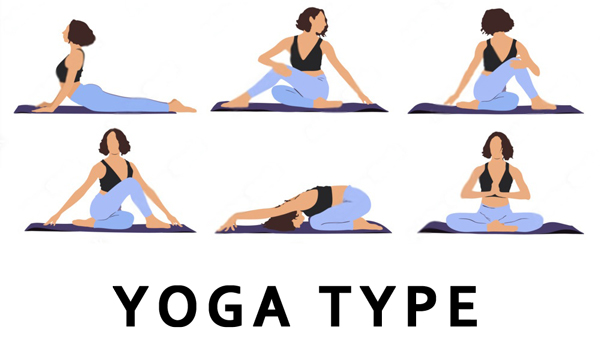
Considering how many types of this sort of exercise there are, it is no wonder that amateurs find it difficult to pick the right type. Here are a few that you can think about:
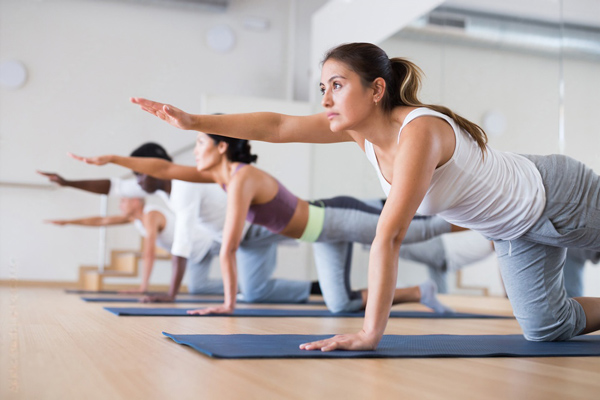
Hatha yoga is a fantastic starting point if you’re new to yoga. It’s all about mastering the basics—think slow, deliberate movements and a big emphasis on breathing right. In a Hatha class, you’ll spend a bit more time in each pose, which isn’t just good for getting the alignment spot on, but also does wonders for your strength, balance, and mental clarity.
Since the pace is more relaxed, you get the chance to familiarize yourself with the foundational poses, laying a solid groundwork for your yoga journey. Plus, it’s great for unwinding and sharpening your focus, which is why so many beginners gravitate towards it. If you’re looking to ease stress and boost your overall sense of well-being, Hatha yoga might just be what you need.
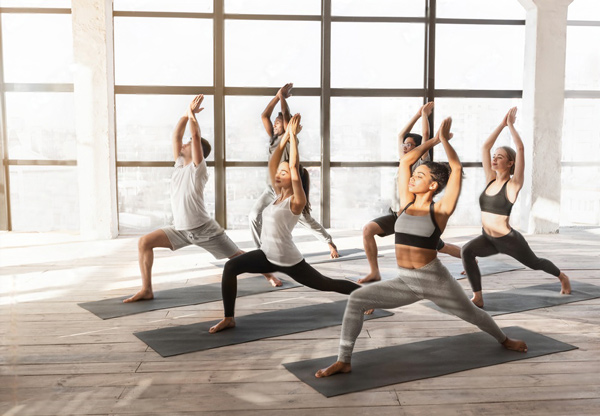
Vinyasa yoga, often called flow yoga, is all about movement and breath coming together in a dance-like sequence. It’s perfect if you’re looking for a yoga style that keeps you moving and gets your heart rate up. In Vinyasa, you won’t just sit and stretch; you’ll flow from one pose to the next, which makes it a bit more of a workout.
Classes typically kick off with sun salutations, which are like the yoga version of a warm-up lap, heating your body and prepping your muscles. This fluid style not only boosts your heart health and endurance but also helps in enhancing your flexibility.
The beauty of Vinyasa is that it’s packed with a variety of poses—from standing and balancing to seated stretches. Every move is linked to your breathing, which helps maintain a rhythmic flow throughout the session. Despite its challenges, Vinyasa is really for everyone. Many studios offer different levels, so whether you’re just starting or you’re a seasoned yogi, you’ll find a class that fits.
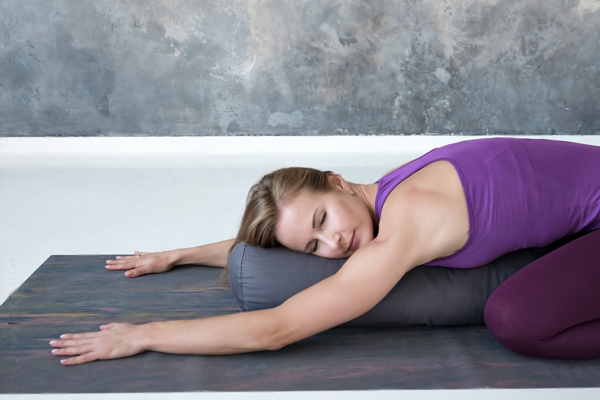
Restorative yoga is like a gentle hug for your body and mind. It’s slow-paced and incredibly soothing, using props like blankets, bolsters, and blocks to comfortably support your body in various poses. If you’re looking to melt away stress and embrace deep relaxation, this is the yoga style for you.
In a typical restorative class, you’ll settle into each pose for several minutes. This extended time helps your body to fully relax and release any built-up tension. The props are there to make sure you’re not straining or uncomfortable, which makes restorative yoga a great option if you’re dealing with injuries, chronic pain, or if moving around is a bit challenging.
Beyond just easing your body, restorative yoga has a wonderfully calming effect on your mind. It’s known for easing anxiety, boosting sleep quality, and fostering a deep sense of peace. Whether you’re a complete beginner or more experienced, this nurturing style can offer profound benefits, especially during those extra stressful times or when you’re feeling run-down.
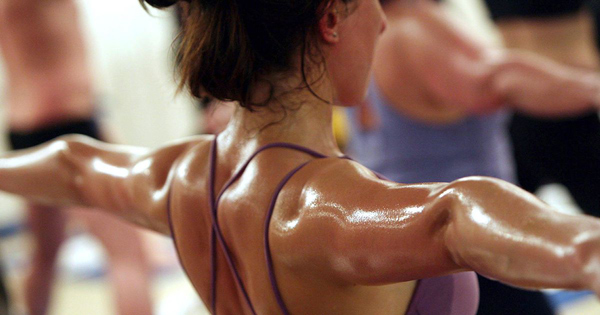
Bikram yoga, often referred to as hot yoga, turns up the heat—literally! Classes are held in rooms heated to 105°F (40°C) with about 40% humidity. Imagine doing a sequence of 26 poses and a couple of breathing exercises, all within a 90-minute session in that sweltering setting. It’s designed to warm up your muscles, boost your flexibility, and get you sweating, which is thought to help detoxify the body.
This type of yoga packs a punch, as the heat cranks up the intensity of the workout and makes your heart pump harder. Despite the challenge, the consistent sequence of poses allows you to focus on nailing your alignment and breathing correctly. This makes Bikram a solid choice even for beginners since you can go at your own pace.
If you’re new to Bikram, staying hydrated is key. It’s also important to listen to your body and take breaks whenever you need to. While the heat might not be everyone’s cup of tea, especially if you have certain health issues, many people find that practicing in a warm room helps them go deeper into poses and leaves them feeling especially accomplished after class.
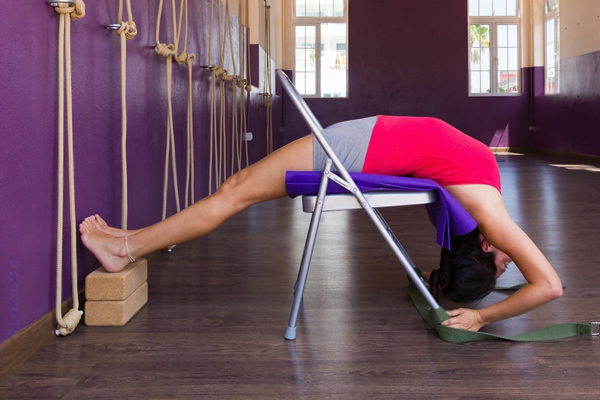
Iyengar yoga is like the meticulous older sibling in the yoga family, named after its founder, B.K.S. Iyengar. This style takes a no-nonsense approach to alignment and precision, making it perfect if you’re the type who likes to get things just right. It’s a bit like having a yoga blueprint—every pose is calculated, with a strong emphasis on doing each one perfectly with the help of an arsenal of props.
Imagine walking into an Iyengar class: you might find more props than a theater’s backstage—belts, blocks, blankets, you name it. These aren’t just for show; they help you tweak each pose to fit your body’s needs, making it an ideal pick if you’re nursing an injury or managing a chronic condition.
In these classes, poses are held for what can feel like an eternity, allowing you to dial in the perfect alignment. Teachers are like friendly drill sergeants, offering detailed instructions and occasionally stepping in for a hands-on adjustment to make sure you’re aligned down to your last toe.
Starting with Iyengar is like learning to build a house from the foundation up—it’s all about building a solid base to prevent future injuries. And if you’re the kind of person who enjoys a bit of mental gymnastics, the intense focus required can also help quiet your mind and sharpen your concentration, turning you into a zen master of mindfulness and balance. So grab your blocks and get ready to be the architect of your yogic journey!
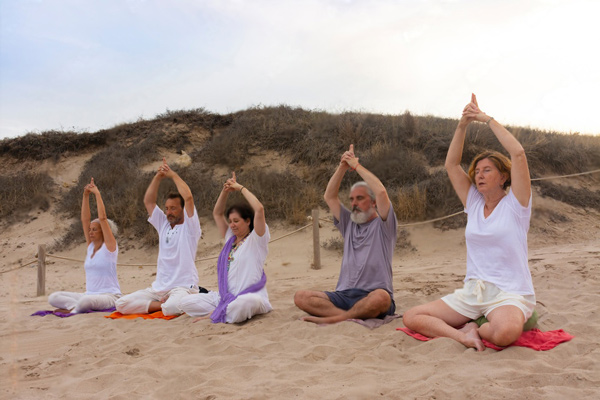
Kundalini yoga is a type of movement that is both physically and spiritually oriented and which integrates the use of postures, pranayama, meditation, and sound. This style seeks to raise the base or root energy (known as kundalini) located at the base of the body’s spine for a better understanding of one’s true self.
Most Kundalini classes start with a symbol which is followed by appropriate kriyas (series of poses) fulfilling a particular need in the body and working with chakras. Pranayama, or breath control practices, is also an essential aspect of Kundalini Yoga, and certain practices like Breath of Fire lead to internal warming which is crucial in rewiring the body’s energy level.
Kundalini yoga is intense and calls for regular physical practice but due to the focus on breath exercises and meditation, it’s also suitable for novices. Chanters and meditators, who appreciate the spiritual side of Kundalini yoga, usually progress further in their self-awareness into the deeper self and find more wisdom within oneself.
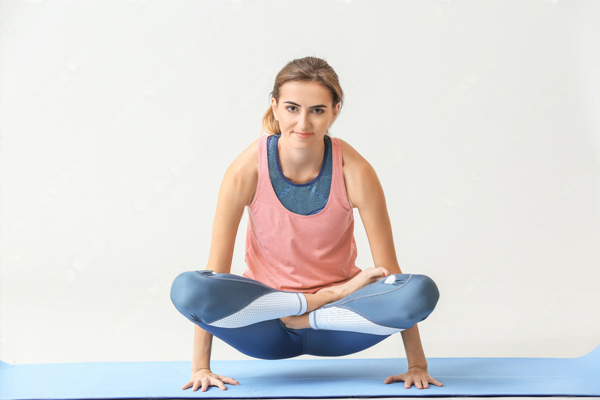
Ashtanga Yoga is a type of yoga that incorporates a lot of movement and is considered the most physically strenuous of yoga styles that was invented in the 20th century by K. Pattabhi Jois.” It is attached to a very old manuscript called the Yoga Korunta and connects breathing and a set of physical postures in sequential order.
The key principal feature of training involves habitual warm-up as well as dry-land routines that consist of gardens and postures. Primary series, Intermediate series, and advanced series are three divisions of exercise sequences. Each series is completed in a continuous sequence where, as the convention has it, practitioners are usually made to learn each pose first before they can proceed to the next movements of the dance.
Ashtanga practice consists of led and self-guided practices. In led practice, students are taken through the sequence by the teacher. In self-guided or Mysore practice, students memorize the sequence, and the sequence proceeds according to the pace and progress of each student with the help of a teacher.
Ashtanga has very specific combinations of postures which are followed in the general instruction. Many practitioners do try to make adjustments to how the practice is applied if individual practitioners have altered needs to budding injuries.
The most aim is towards tristhāna where breath, balance, and sight are controlled, to train the mind.
Strength, flexibility, stamina, and an improved clear mental focus are the benefits of Ashtanga. It is not an easy practice since commitment and adherence are two key elements for successful practice but it attracts those who want to combine body workouts seeking a harsh practice.
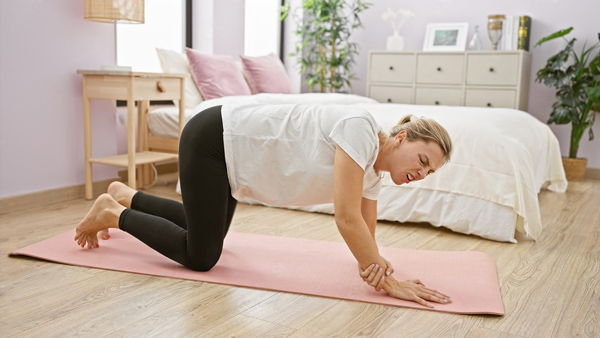
Yoga has its health benefits that can be seen when it is done properly. However, there are cases of injuries, most of which are often among novices. Some usual injuries in yoga are:
To avoid such injuries, it is necessary to:
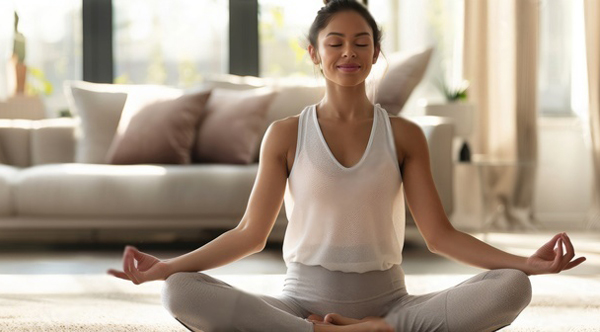
You cannot understand the full advantages of yoga unless and until you practice it continually. Below are some suggestions for handling yoga every day:
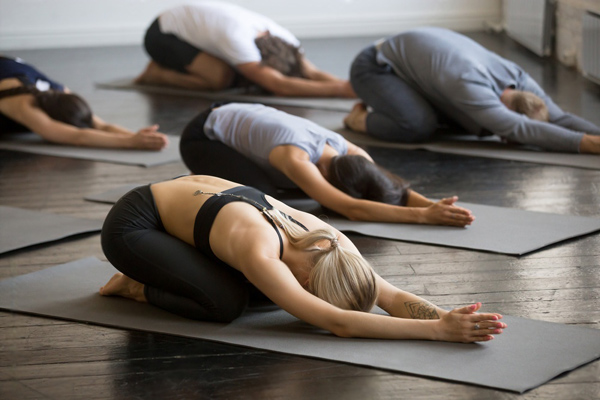
In conclusion, yoga is a practice that consists of various activities and helps to seek numerous benefits whether you are a beginner or more experienced. If your goal is to improve physical and psychological well-being – relieve stress, reduce back pain, enhance physical agility, or promote mental tranquility, yoga is certainly the answer to such problems.
Depending on your interests and objectives, such as Hatha, Vinyasa, Restorative, or Ashtanga, there is always one within reach. But always remember to work within your body limits and the level of achievement you have attained so far, and always seek new knowledge from the people who possess it to avoid overuse of some muscles or parts of the body.
It is so beneficial to those who devote time to the practice that those short sessions alone can be sufficient to boost health and relieve stress. With time, yoga can be adopted even as a lifestyle that contributes towards general physical health and mental happiness.
Tap into the healing potential of yoga and improve your quality of life one step at a time.
Leave a comment